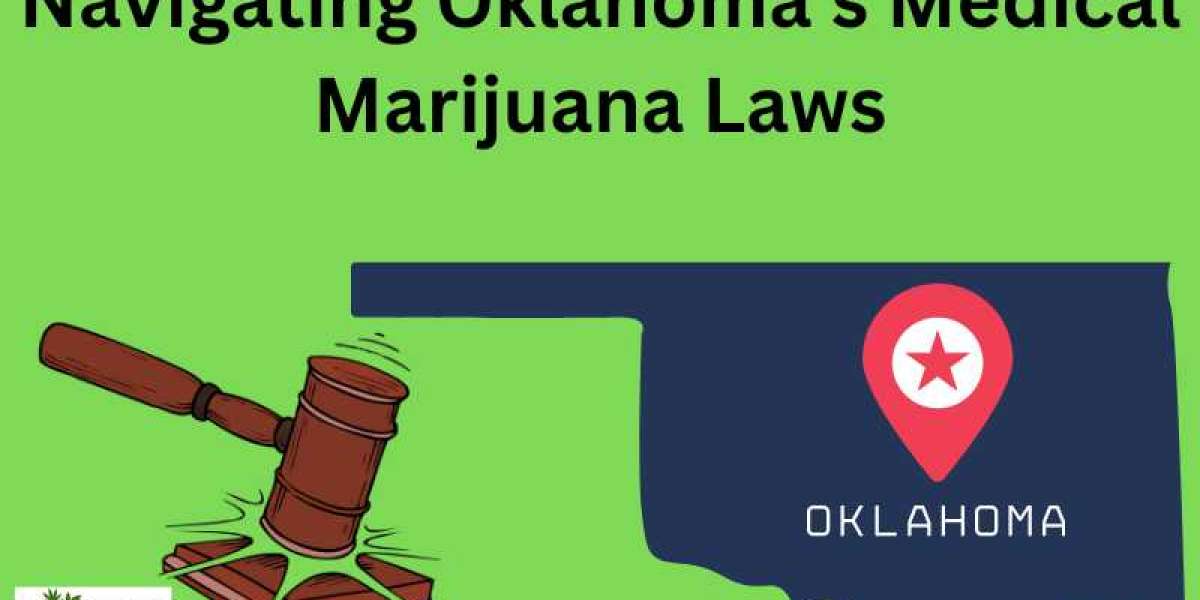Since the passage of State Question 788 in June 2018, Oklahoma has developed one of the most progressive medical marijuana programs in the United States. This blog delves into the key aspects of Oklahoma's medical marijuana laws, providing a comprehensive overview for patients, caregivers, and industry participants.
Legal Framework: State Question 788
State Question 788, approved by Oklahoma voters, laid the foundation for the state's medical marijuana program. It established the Oklahoma Medical Marijuana Authority (OMMA) to regulate and oversee the program, ensuring safe and legal access to medical marijuana for patients.
Who Qualifies?
Oklahoma’s medical marijuana laws are unique in their inclusivity. Unlike many states that limit medical marijuana access to specific medical conditions, Oklahoma leaves the decision to recommend marijuana up to the discretion of board-certified physicians. This means any condition a physician deems appropriate can be treated with medical marijuana.
The Application Process
Obtaining a medical marijuana card in Oklahoma involves a straightforward process:
- Physician's Recommendation: Patients must first get a written certification from a licensed physician.
- Online Application: Submit the physician certification, a government-issued ID, and a passport-style photo through the OMMA's online portal.
- Fee Payment: The application fee is $100, or $20 for patients on Medicaid or Medicare.
- Approval: The OMMA processes applications within 14 days, and successful applicants receive their medical marijuana cards by mail.
Possession and Home Cultivation
Oklahoma’s laws allow for substantial possession and home cultivation:
- Possession: Patients can have up to three ounces of marijuana on their person and eight ounces at home. They can also possess up to one ounce of concentrated marijuana and 72 ounces of edibles.
- Cultivation: Patients are permitted to grow up to six mature marijuana plants and six seedlings.
Dispensaries and Purchases
The state boasts a thriving network of dispensaries. These facilities are licensed by the OMMA and must adhere to strict regulations to ensure product quality and safety. Patients can purchase up to three ounces of marijuana per transaction without monthly limits, providing flexibility in managing their medical needs.
OMMA's Regulatory Role
The OMMA oversees all aspects of the medical marijuana program, from licensing and compliance to patient protection and product safety.
Licensing Requirements
Marijuana businesses, including dispensaries, growers, processors, and testing labs, must be licensed by the OMMA. The application process is thorough, requiring detailed disclosures, background checks, and compliance with state regulations.
Testing and Safety Protocols
All medical marijuana products must be tested for potency and contaminants. This includes screening for pesticides, heavy metals, and microbial impurities. Licensed laboratories conduct these tests to ensure the safety and consistency of products.
Protections for Medical Marijuana Patients
Oklahoma's laws provide several protections for medical marijuana patients:
- Employment: Employers cannot discriminate against employees based on their status as medical marijuana patients. However, they can still enforce drug-free workplace policies.
- Housing: Landlords cannot refuse to lease to or penalize tenants solely because they are medical marijuana patients.
- Parental Rights: Patients' use of medical marijuana cannot be the sole reason for losing parental rights or custody.
Trends and Future Outlook
Oklahoma’s medical marijuana program is dynamic and continually evolving. Recent trends include discussions about expanding access and refining regulations to improve the system.
Legislative Updates
Lawmakers frequently consider changes to the medical marijuana program. Current discussions involve expanding qualifying conditions, allowing delivery services, and enhancing patient privacy protections.
Keeping Informed
Staying updated on legislative changes and regulatory developments is crucial for patients and industry stakeholders. This ensures compliance and helps maximize the benefits of Oklahoma's medical marijuana program.
Conclusion
Oklahoma's medical marijuana laws represent a significant step forward in providing accessible, patient-centric care. The flexibility in qualifying conditions, along with generous possession and cultivation allowances, makes it one of the most progressive programs in the country. As the industry continues to evolve, staying informed about legal and regulatory changes is essential for everyone involved in Oklahoma’s medical marijuana landscape.
Blog 5: A Deep Dive into Oklahoma's Medical Marijuana Program
Oklahoma has distinguished itself with a progressive approach to medical marijuana, marked by the passage of State Question 788 in June 2018. This blog provides an in-depth look at Oklahoma's medical marijuana laws, highlighting key aspects such as eligibility, the application process, legal protections, and regulatory oversight.
The Foundation of Oklahoma’s Medical Marijuana Laws
State Question 788 established the legal and regulatory framework for medical marijuana in Oklahoma. The Oklahoma Medical Marijuana Authority (OMMA) was created to oversee the program, ensuring that patients have safe and regulated access to medical marijuana.
Broad Eligibility Criteria
A hallmark of Oklahoma’s medical marijuana program is its inclusive eligibility criteria. Unlike many states that limit access to specific medical conditions, Oklahoma allows any board-certified physician to recommend marijuana for any condition they believe would benefit from its use.
Steps to Obtain a Medical Marijuana Card
The process to obtain a medical marijuana card in Oklahoma is relatively simple:
- Physician Certification: Obtain a recommendation from a licensed physician.
- Submit Application: Apply online through the OMMA website, providing the physician certification, a valid ID, and a passport-style photo.
- Pay the Fee: The standard fee is $100, with a reduced rate of $20 for Medicaid or Medicare recipients.
- Approval Process: The OMMA reviews applications within 14 days. Approved patients receive their medical marijuana cards by mail.
Possession and Home Cultivation Rights
Oklahoma allows generous limits for possession and home cultivation:
- Possession: Patients can carry up to three ounces of marijuana on their person and store up to eight ounces at home. They can also possess one ounce of concentrated marijuana and 72 ounces of edibles.
- Cultivation: Patients can grow up to six mature plants and six seedlings.
Dispensary Access and Purchase Limits
Oklahoma's network of dispensaries provides patients with access to a wide range of medical marijuana products. Dispensaries must be licensed by the OMMA and adhere to strict regulatory standards. Patients can purchase up to three ounces of marijuana per transaction, with no monthly limit, offering flexibility in managing their treatment.
The Role of the OMMA
The OMMA regulates all aspects of the medical marijuana program, including licensing, compliance, and patient protections.
Licensing for Marijuana Businesses
Businesses involved in the medical marijuana industry, such as dispensaries, growers, processors, and testing labs, must obtain licenses from the OMMA. The application process is comprehensive, requiring background checks, financial disclosures, and compliance with state regulations.
Ensuring Product Safety
All medical marijuana products must be tested for potency and contaminants. This includes screening for pesticides, heavy metals, and microbial impurities. Licensed laboratories conduct these tests to ensure that products are safe and meet quality standards.
Legal Protections for Patients
Oklahoma law provides significant protections for medical marijuana patients:
- Employment: Employers cannot discriminate against employees based on their status as medical marijuana patients. However, they can enforce drug-free workplace policies.
- Housing: Landlords cannot refuse to lease to or penalize tenants solely because they are medical marijuana patients.
- Parental Rights: The use of medical marijuana cannot be the sole reason for losing parental rights or custody.
Evolving Trends and Future Prospects
Oklahoma's medical marijuana program continues to evolve, with ongoing legislative efforts aimed at refining and improving the system.
Legislative Updates
Recent legislative discussions focus on expanding access, improving regulatory practices, and enhancing patient protections. Topics include allowing delivery services, expanding qualifying conditions, and ensuring patient privacy.
Staying Updated
For patients and industry stakeholders, staying informed about legislative changes and regulatory updates is essential. This helps ensure compliance and maximizes the benefits of Oklahoma's medical marijuana program.
Conclusion
Oklahoma’s medical marijuana program is one of the most inclusive and patient-friendly in the United States. The broad eligibility criteria, combined with generous possession and cultivation allowances, make it a model for other states. As the program continues to grow and adapt, staying informed about legal and regulatory changes is crucial for patients, caregivers, and businesses involved in Oklahoma’s medical marijuana landscape.




